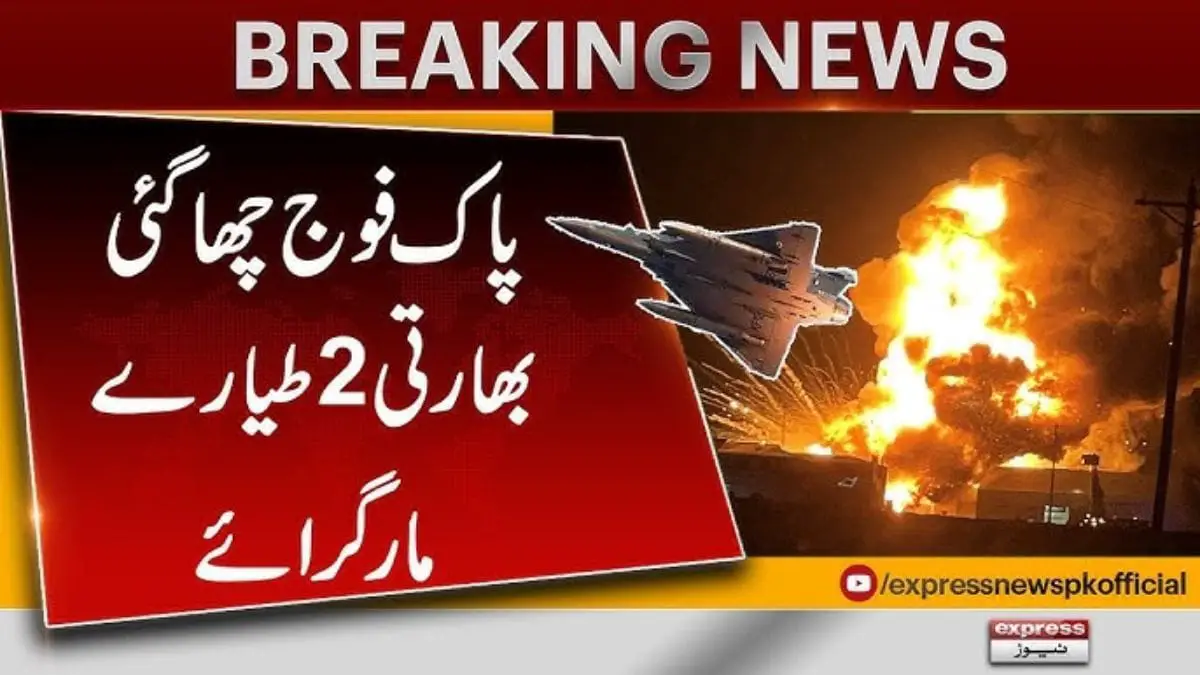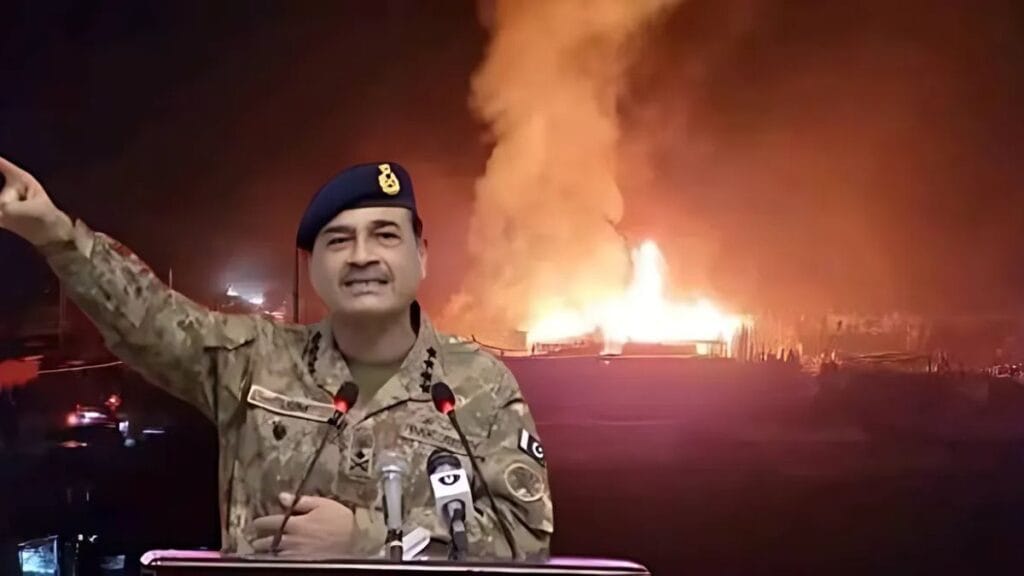- May 6, 2025
Pakistan Retaliation to India: This investigation examines military strategies together with geopolitical consequences

Recent history has witnessed Pakistan Retaliation to India emerge as one of the world’s most substantial military reactions. Both nuclear-armed states of India and Pakistan currently operate under growing tension levels in a situation watched closely by the global community. Pakistan’s military response to Indian aggression stands as a vital key for forecasting South Asian geopolitical events and defense capabilities, as well as military tactical evolution. The following analysis will study Pakistan’s military actions along with its defensive approaches while assessing what future hostility might bring.
Pakistan responded with military actions as an immediate response to India’s previous strikes.
Pakistan Retaliation to India results from a long-standing series of tensions between these neighboring countries that include years of border clashes and accumulated historical disputes. Pakistan finds itself compelled to adopt military retaliation because of its continuous dispute regarding Kashmir, alongside ongoing border clashes, alongside perceived Indian military provocations.
The current defense response of Pakistan against India shows rising demands for military preparation. The Kashmir conflict revealed new combustion factors that pushed the countries toward a potential major military conflict between them. The principal defense and deterrence role of the Pakistan military serves additionally to communicate internationally how Pakistan defends its sovereignty and keeps its territory intact.
Pakistan’s Military Strategy in Retaliation
The Pakistan Retaliation to India includes multiple strategic elements between air missile defense systems and conventional battlefield doctrine and nuclear deterrent capabilities. Current military dynamics require Pakistan to execute both standard warfare operations alongside preparing for the most extreme possible outcomes. a nuclear escalation.
The military approach of Pakistan goes beyond single-for-single retaliation against Indian moves and simultaneously initiates conditions for future diplomatic negotiations. Military strength demonstrations serve Pakistan as a tool to gain advantage in upcoming diplomatic meetings. The Pakistan military stands ready to defend against adversaries but continues to promote diplomacy as the main solution.
Pakistan Military Action: Conventional and Strategic Forces
Understanding Pakistan Retaliation to India engagement requires an assessment of its traditional military forces, which include the Pakistan Army, Air Force, and Navy. A planned aerial operation accompanies Pakistan military strikes to deliver a dual purpose, which functions as both a retaliatory action and a display of operational reach and precision capabilities. Pakistan puts its priority on developing air defense systems while training elite combat-ready units, along with maintaining high operational readiness for military equipment.
The Pakistan response employs three different military elements, which combine ground troops for target engagement alongside special operators for stealth operations and airstrikes for accurate bombardment. Both approaches provide defensive protection to civilians concurrently with demonstrating national military strength. Pakistan boosts its electronic warfare capabilities as part of technological modernization efforts to prevent enemy air superiority and disrupt battlefield communications.
Nuclear Deterrence Games a Vital Role in Pakistan’s Counterattacks
The use of nuclear deterrence stands as a major component of Pakistan’s countermeasures against Indian aggression. The two countries keep nuclear stockpiles, and further military actions beyond standard warfare present an overwhelming danger to global safety. Pakistan’s nuclear force serves as a dominant defense system that forces India to weigh all major military operations prudently.
The world community understands Pakistan’s ability to defend itself against India using nuclear capabilities, so they constantly advocate for regional de-escalation. For countries with nuclear weapons, the ongoing presence creates barriers to peace deals and keeps major wars from starting. The essence of Pakistan’s nuclear capability to respond decisively to significant aggressive actions determines regional stability.
Visual Productions Depict Pakistan’s Counterattacks against India
Popular representation of Pakistan Retaliation to India in films and documentaries strongly shaped how audiences viewed the conflicts, according to researchers. Taj Mahal and Kashmir Files offer viewers an insight into the combined emotional and political elements that shape India-Pakistan military confrontations. Through cinematic works, people discover why conflicts happen in this region while experiencing firsthand the human cost that it produces on residents.
Pakistan’s military transformations will motivate filmmakers to create content exploring warfare sacrifices while analyzing human resilience against war, while demonstrating its human consequences. The emotional heaviness exhibited during military confrontations serves dual functions in movies because it creates opportunities to teach reconciliation tactics for India and Pakistan. The Pakistan military intervention functions as a defensive necessity to protect its people instead of aggressive action that shows a global power battle.

Pakistan’s counterattacks against India.
Following Pakistan Retaliation to India, both countries face severe effects that extend beyond military domains. Several indefinite consequences will create expanding influence across regional and worldwide fronts as follows:
Economic Impacts:
Economic stability becomes unstable during times of military conflict. Ongoing tensions will create negative impacts on trade pathways while disrupting community economic growth and international financial investments in both countries. Global supply chains face possible disruption, which might worsen if international actors join the conflict.
Economic Impacts:
Economic stability becomes unstable during times of military conflict. Ongoing tensions will create negative impacts on trade pathways while disrupting community economic growth and international financial investments in both countries. Global supply chains face possible disruption, which might worsen if international actors join the conflict.
Diplomatic Challenges:
Pakistan maintains its defensive position focused on negotiation, while Pakistan engages in military actions. The two nations require international support to find common ground for resolving their differences. Long-running military conflicts between the two nations would ultimately trigger peaceful diplomatic involvement from key global actors to avert total war.
Civilian Casualties:
Aerial attacks, together with border conflicts between armies, inevitably result in the loss of innocent civilian lives. Unless counteracted, India’s military response against Pakistan will generate increased casualties and deteriorate human rights in the affected geographic area.
The Path to Peace: Can Retaliation Lead to Diplomacy?
Pakistan’s counterattacks against India function simultaneously as direct military reactions and diplomatic signals, which push both sides toward future negotiations. Both countries can stop their cycles of responses through diplomatic discussio,n provided that they want to end retaliation. International actors combined with peace organizations must step in to create dialogical solutions for enduring conflicts encompassing Kashmir and border protection.
Conclusion: Navigating the Road Ahead
Pakistan’s counterattacks against India rise above standard military operations to establish a critical turning point within India-Pakistan diplomatic history. Strategic diplomacy has become crucial because both countries are facing additional military escalations. Pakistan’s defense efforts, combined with military strategies, serve national security requirements, but achieving regional peace represents the essential target. World observers keep their attention on the deteriorating situation, awaiting an end that protects human lives and guards against destructive threats to regional stability.
Sustained diplomatic action remains the only way to prevent catastrophic regional consequences from a full-scale Pakistan military move. The world’s future rests heavily on how both countries make their present-day choices concerning South Asia’s stability.

